Adding container-grown plants to an existing blooming environment or creating a garden from scratch are viable options. As a result of planting in repurposed nursery containers, your garden and home will be more visually appealing and useful. If you want to produce year-round herbs and vegetables, if you don’t have a lot of space, if you’re going to add height, texture and diversity to your garden and regulate the soil quality, then start container gardening.
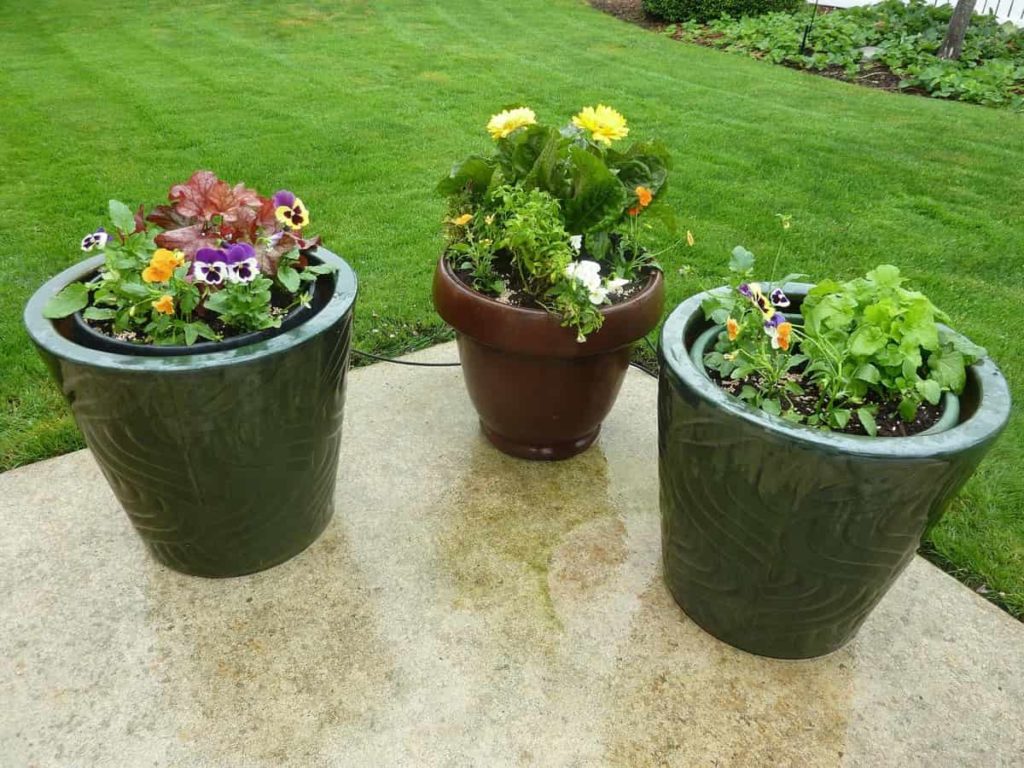
This article discusses Iowa container gardening ideas and starting a container garden from scratch, the best plants for Iowa to plant in containers and the best home garden plants for containers in Iowa. Many cities in Iowa, such as Des Moines, Cedar Rapids, Davenport, and Sioux City, are emerging as focal points for container gardening in the state. This article helps people eager to grow plants in containers in Iowa state.
What are the USDA hardiness zones (planting zones) of Iowa state?
The climate of Iowa is extremely humid for a continental environment, which restricts the number of planting zones found in the state. In addition, the whole state is subjected to harsh conditions throughout the year, including icy winters, scorching summers, and drenching springs to balance things off. The summer months are notorious for their high levels of humidity and heat. During the daytime hours throughout the summer months, temperatures often reach the high 90s and have been known to climb into the 100s on occasion.
The average low temperature will drop far into the negatives during the winter months and often fall at or below -18 degrees. In Iowa, the annual average number of sunny days is around 166, while the number of cloudy or partly cloudy days is close to 200. The growth zones of Iowa can vary anywhere from 4b to 5b, with just a very tiny portion of the state’s southern corner reaching as high as zone 6a. Therefore, knowing about hardiness zones and planting zones is essential for garden design.
Gardeners may discover their planting zone using an interactive planting zone map, providing information on what plants can be grown and when those plants should be planted. The planting zones of Iowa provide guidance on which plant species are most likely to flourish in a given environment. The dates of the first and the final frosts are used to categorise areas. Frost dates determine when specific plants should be planted to guarantee their survival.
It is safe to plant anything that can thrive in your particular zone or one lower than it. This indicates that if you live in zone 4b, you should not have any problems planting anything classified for zones 1 to 4. If you grow plants in your garden that are categorised as being able to thrive in higher zones, there is a greater chance that they may perish in climates with severe winters. However, many plants can be grown successfully in Iowa, including plants and flowers.
The daffodil, the creeping phlox, the peony, the purple coneflower, the daylily, the Virginia bluebell, and the lily-of-the-valley are all excellent choices. Brussels sprouts, If you are interested in cultivating a vegetable garden in the state, some of the best options for planting are beans and peas, broccoli, cabbage, and lettuce.
Iowa container gardening: Steps to grow plants in containers in Iowa
Make sure the container you select is ideal
Based on the final location, decide on the size, shape, style, and material you want. Large-scale pots can serve as a garden focal point. Consider how the pot will appear in the winter when landscapes might be drab and bleak when choosing a colour and finish. A casual cottage garden, a formal boxwood garden, or a desert rock garden are all good examples of styles.
The purpose of the container should be determined: if it will be filled with annuals, a solitary plant or tree, or a water garden? When it comes to supporting root balls and development, it’s best to lean on the broad side. Make certain that the pot has a drainage hole or that you can drill one in it before you start planting. Even though it may seem obvious, it’s easy to ignore this when we’re distracted by other design aspects. Saucers with standing water produce mosquitoes, so avoid them.
Plant in a lightweight soilless potting mix rather than a heavy one to avoid overwatering. Also, you don’t have to use simply soil to fill a huge, deep pot. Instead, make it easy to transfer the container by filling two-thirds of it with pine bark, leaves, or other mulch and the rest with potting soil, making it more stable and less prone to shifting.
Know your situation and choose the potting mix
Choosing the proper plant for your circumstances is critical if you want to succeed in container gardening. Anything you plant on a balcony must be able to withstand the wind. The kind of plants you can grow depends on how much sunshine you get. Plants, which are sun-loving plants, need at least four to five hours of direct sunlight each day to thrive. Before purchasing expensive plants, double-check your area’s exposure to sunlight.
Free drainage is essential in containers, or your plants might drown. One or more 1–2 cm diameter drainage holes are standard on most pots and tubs. Because garden soil does not drain properly and tends to harden, it is not suited for growing plants in pots. The open, porous nature of potting mixes means they are free of weed seeds, soil pests, and plant diseases.
Avoid the temptation to save time by putting a tiny plant in a big pot when potting up most plants. It’s impossible to grow plants too big for their pots, yet some love it. When the roots of a plant have filled their previous container, it is better to transfer it to a little bigger one.
Start planting
If you are growing specimens with shallow roots in tall pots, you may wish to fill the bottom half of the pot with lightweight materials. This encourages drainage and keeps the soil from becoming soggy. Ensure that each plant has a depth of 1 to 2 inches below the pot’s lip before planting, starting with the biggest specimen and working your way outwards, scooping and filling as necessary.
When you are planting, take care not to compact the soil too much. To create space for your plants without crowding them, you should shift the dirt to the side rather than forcing it down. After removing some of the earth, fill in the remaining area with more soil so that the plants can be tucked away safely.
Be careful while watering
Remember that container-grown plants have a confined root system and cannot hunt for moisture as they would in an open garden. This is true regardless of what you choose to grow in your pots. The plants may need daily watering during the hot summer days or even twice daily if exposed to direct sunlight. Always water your plants properly rather than simply giving them a few sprinkles.
In case you missed it: Hawaii Container Gardening: Guide on How to Start with Vegetables, Fruits, Flowers at Home
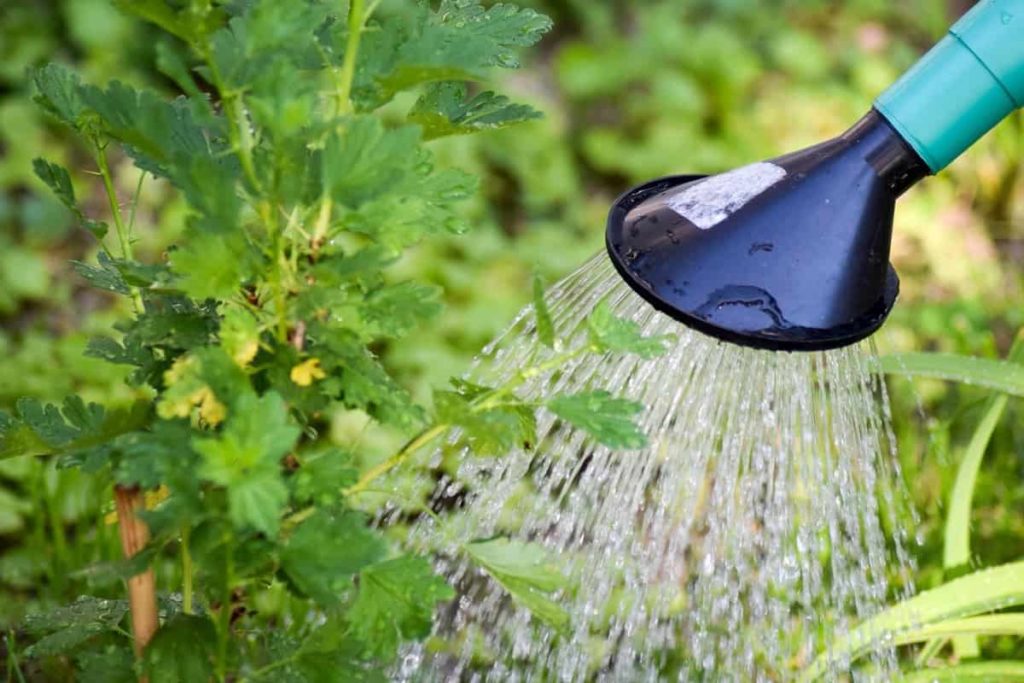
Instead of a nozzle on your hose, try using a water-breaker or a watering wand. Water-breakers are devices that quietly pour a large amount of water over the potting mix. When you pot plants, be sure to allow some space between the soil level and the lip of the container. When you water, pour water into this area very gently until it begins to seep through the openings in the drainage system.
Evaporation can be reduced, and the surface soil can be cooled by applying a mulch made of grass clippings, compost, coarse gravel, pebbles, or pine bark. However, plant nutrients can be lost even when good drainage and regular watering. Therefore, to maintain healthy plant growth, plants need consistent application of just a tiny quantity of fertiliser.
Be sure to fertilise your plants
You will need to fertilise the flowers and veggies throughout the summer to maintain them looking their best. Even while some potting soils already contain slow-release fertiliser, it is still good to add some amount of liquid fertiliser each time you water your plants. This will help the fertiliser work more effectively. In addition, plants that consume a lot of food, like flowers and vegetables, benefit from receiving an additional serving of plant food.
Deal with pests and diseases
Infested plants should be isolated or removed from the area. Your other plants should be safe from this. When you attend to its issue, make sure that it is isolated from the rest of your containers, and make sure that you wash your hands and any gardening equipment that you use after working with it. Take these techniques to stop a pest infestation in your container gardening. Next, get rid of the weeds and pests in your garden.
Use soap to prevent large slugs, caterpillars, beetles, and weevils. The garden hose may be able to get rid of smaller insects like aphids and whiteflies. Swiping the insects off the leaves using Q-tips bathed in rubbing alcohol is an additional technique that some gardening experts recommend. There are several garden pests that ladybugs and ground beetles prey on that are harmful to plants.
No harm will be done to your container gardens if you let most insects that populate your garden roam about and feast on other insects. In container gardening, some plants are more vulnerable to pests than others. Make sure to remember while you’re picking out plants for container gardening. Plants that aren’t native to your region, such as tropical ones, might be particularly difficult to care for.
Garden pests and diseases in your region haven’t developed a natural tolerance. Therefore, they are more susceptible. Keep a close eye on these plants and take action fast if you see hazardous insects, which benefits container gardening. Plant checkups are a great way to avoid container garden issues. Keep an eye on a few leaves as you water; inspect the soil for any burrowing creatures.
Cut the diseased part of the plants. If you can, remove insects from the plants by hand. Always brush or spray out the areas in the vicinity of your containers. Contaminated outdoor spaces serve as a breeding site for pests and diseases that can harm container gardens.
What are the best vegetables to grow in Iowa state?
Vegetables from the chilly season prefer cooler midday temperatures, while those from the warm season prefer warmer daytime temperatures. While tomatoes and peppers are not cold-resistant, cauliflower, broccoli, spinach, and lettuce are good candidates for a light frost. You can begin planting cool-season veggies in central and southern Iowa in mid-April. Mid-May is the best time to sow warm-season veggies in Central Iowa. Some cool-season vegetables with a short growing cycle may be replanted in the late summer for harvest in the autumn.
Beans: Bush kinds such as “derby” and “provider” are the best and need a container with a depth of around 12 inches to grow. Vegetables need to be checked for their root depth to develop properly. To grow long poles in a container, you need to link the pot to a trellis.
Lettuce: Luxuriant greens and lettuce are the best bets for the greatest container veggies. The pot’s size is irrelevant in this situation. The best way to grow delicious salads at home is to start with some good soil, add the seeds, and keep the soil wet.
In case you missed it: Wisconsin Container Gardening: How to Start with Vegetables, Fruits, Flowers, and Herbs at Home for Beginners
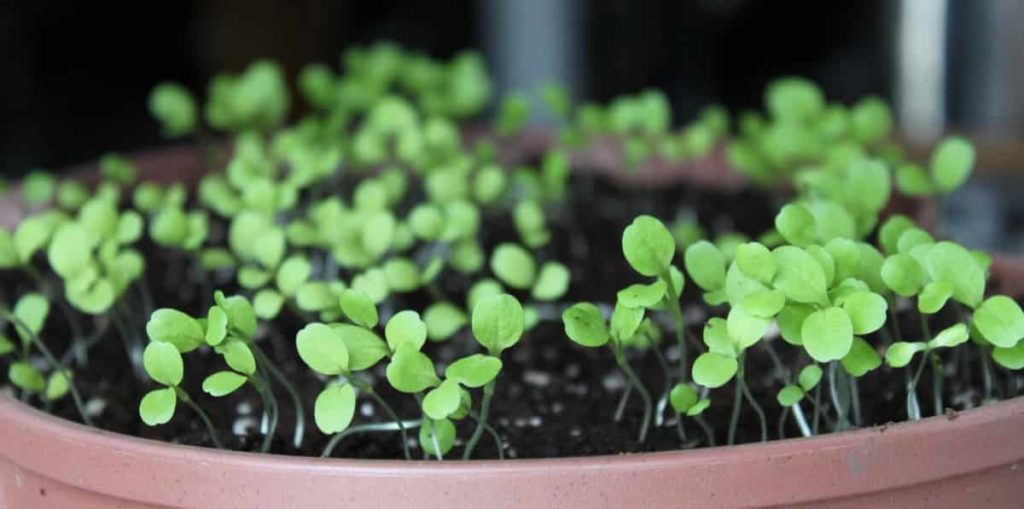
Tomatoes: Tomatoes can be grown in containers by most individuals. Tomatoes are among the most prolific vegetables you can produce in pots, without a doubt. Unfortunately, cold weather does not agree with tomatoes in the least! If there’s a chance of frost, don’t put the plants out too early. Tomatoes are not hardy enough to make it through a freeze. Before placing them in your garden, they must first be “hardened off” or progressively habituated to living outdoors.
Potatoes: One of the simplest methods for growing potatoes is in a container. Containers make it easy to mound the earth over the plants, which is necessary as the plants develop. Potatoes in pots demand a lot of soil and water, but the results are worth it since they taste better when fresh. Fungus and blight spread more easily in the ground than in a pot, so container gardening is better. Potatoes need big pots with enough drainage.
Peppers: Planting peppers in pots helps to decrease cross-pollination between pepper varieties. Several peppers can be grown in pots or grow boxes, including spicy and sweet. For optimal development, each pot should be at least 12 inches deep. They should get 8-10 hours of direct sunlight every day. You should water your peppers regularly and ensure the containers have sufficient drainage. On the other hand, Peppers dislike stagnant water and do not thrive in excessively moist soil.
What are the best fruits to grow in Iowa state?
You can grow many fruits in Iowa state, such as pineapples, peaches, plums, apples, strawberries, blueberries, gooseberries, raspberries, figs, and other fruits. Some of the details are given below:
Strawberries: Perhaps the most crucial consideration is what kind of container you choose to grow your plants. However, before you can start planting your strawberries, you’ll need to get a few things in order. To successfully grow a plant, you must first choose an appropriate container. They can be grown in various containers because of how adaptable strawberries are.
In case you missed it: New Jersey Container Gardening: How to Start with Vegetables, Fruits, Herbs, and Flowers
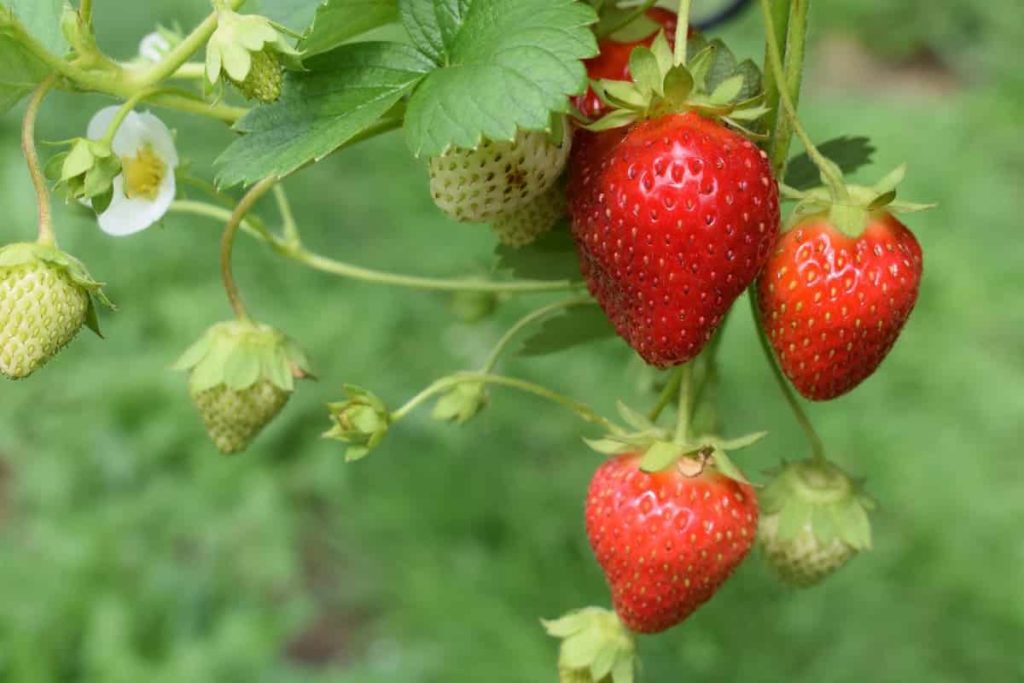
Pineapples: It’s not only the rich and famous who can afford year-round trips to the most exclusive destinations in the world who can enjoy the luxury of the tropics at home. Don’t be tricked into thinking it’s a quick procedure. It might take up to three years from the time of planting, roots, and fruiting for a plant to mature. Because of this, patience is a virtue when it comes to cultivating pineapples, even though the upkeep is simple.
Raspberries: You’re missing out if you’ve never had raspberries before. You’re in luck if you want to grow these delicious fruits in your backyard since the newer types don’t need much maintenance. Unfortunately, it is impossible to grow raspberries in a pot because they are too enormous. In contrast, types like ‘Raspberry Midget’ are ideal for growing in a pot.
Blueberries: The blueberry is another excellent fruit that can be grown in a container. When it comes to soil, blueberries have a lot of preferences. For plants that require acidic soil, you should use a soil mix. A pH range of 4 to 6 seems to be ideal. Pruning and removing any deadwood is an absolute need. Make sure the kind of blueberry you’re growing is self-pollinating or necessitates the presence of another blueberry plant for pollination before planting.
Apples: Before starting an apple tree in pots, consider several variables. Mix potting soil and compost for the soil. A few clay fragments at the bottom restrict water drainage. Plant the tree. You may clip the roots if needed. Important to water. Maintaining an apple tree’s health requires regular watering. Watch the soil to avoid a stressed plant.
What are the best herbs to grow in Iowa state?
You can grow many herbs in Iowa state, such as thyme, mint, parsley, rosemary, basil, oregano, chives, and other herbs. Some of the details are given below:
Rosemary: When cooking, rosemary is a versatile ingredient used in many dishes. Plant it and forget about it since it doesn’t need much attention and can survive without sunlight in the gloomier months of the year.
Parsley: Spring and summer are best to start seeds in pots or seed trays. Growing parsley indoors is possible at any time of year, as long as it is placed in a sunny or somewhat shaded location. You can take it outdoors when it’s warm enough to do so. Harvest the leaves after they have grown to a height of 8 cm.
In case you missed it: Singapore Container Gardening: How to Start with Vegetables, Fruits, Herbs, and Flowers
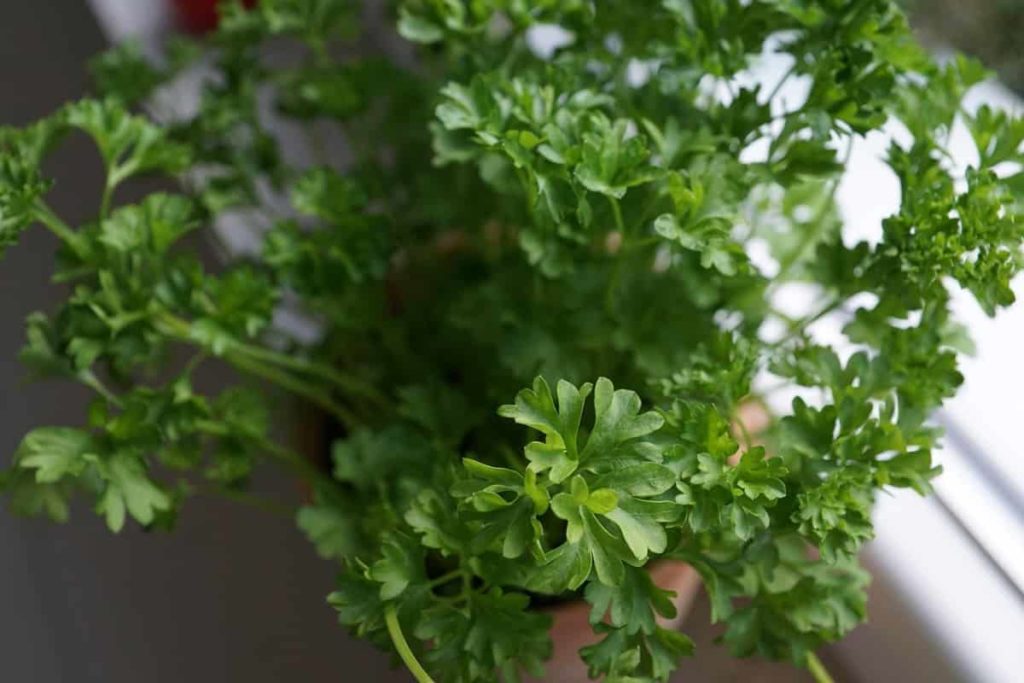
Oregano: The best time to start seedlings outdoors is in early spring when the danger of frost has passed. Despite the need for sunlight, most soils may be tolerated as long as they aren’t soggy in the winter.
Basil: Basil grows well in pots on a shaded patio or a kitchen windowsill with well-drained soil. Basil prefers a sunny, south-facing window sill, so keep it away from draughts if you want to grow it successfully.
Mint: Mint is a fast-growing plant, but it can rapidly take over flowerbeds if planted in the wrong place. The easiest way to keep it confined is in a pot, although it can also be grown on a windowsill. Water more when the weather is hot.
What are the best flowers to grow in Iowa state?
You can grow many flowers in Iowa state, such as Daffodils, Creeping phlox, Siberian iris, Peony, Purple coneflower, Daylily, Virginia bluebells, Lamium, Goats-beard, Black-eyed Susan, and ‘Goldsturm’ and other flowers. Some of the details are given below:
In case you missed it: Oklahoma Container Gardening: Beginner’s Guide for Vegetables, Fruits, Herbs, and Flowers

Black-eyed Susan ‘Goldsturm’: Bright yellow flowers around a black central disc on the black-eyed Susan ‘Goldsturm’. This autumn bloomer can handle just about everything regarding soil conditions. Up to 4 inches across, the flowers bloom on a small, 2-foot-tall shrub.
Virginia bluebells: One of the earliest spring flowers to blossom is the Virginia bluebell. Blue, trumpet-shaped blooms emerge in terminal clusters on 2-foot-tall plants. If you live in Iowa, you should grow this flower in a location that receives some shade from the afternoon sun.
Goats-beard: Plants that need at least 6 hours of sunshine a day produce plume-like blooms in April and May. Grow more than one of these if you want them to flower, since they are dioecious.
Lamium: Lamium, sometimes known as white Nancy, can reach heights of up to two feet in the correct environment. White flowers bloom on this shade-loving shrub in the spring, but Iowans are charmed with its lustrous, dark green leaves—a great solution for locations that are difficult to water.
Joy-Pye weed: Joe Pye weed attracts butterflies in the autumn. This 4- to 7-foot-tall shrub blooms late in the summer and into the autumn. Each tall stalk has a cluster of 4 to 6 white blooms.
- Organic Gardening on a Budget: Low-Cost Methods and Materials
- Gongura Seed Germination and Planting Methods
- Cabbage Seed Germination and Selection
- Broccoli Seed Germination and Selection
- Asparagus Seed Germination and Variety Selection
- Seasonal Flower Gardening: Best Practices for Spring, Summer, Fall, and Winter
- How to Grow Hibiscus from Flower
- Plantation Ideas for Home Decoration: A Beginners Guide
- Flower Garden Designs and Layouts for Beginners
- Planting and Spacing Techniques in Papaya: A Beginner’s Guide
- Growing Gold: Essential Techniques for Planting Pineapples
- How to Make Kalanchoe Plant Bushy: Home Remedies and Solutions
- 11 Reasons Why Your Gardenia is Not Blooming: Home Remedies and Solutions
- Eco Elegance: The Guide to Designing a Drought-Tolerant Landscape
- Gardening on a Slope: Strategies for Hillside Landscaping
- Nourish and Flourish: Top Organic Mulches for Thriving House Plants
- Everything You Want to Know about Indian Mogra Flower: Discover Uses and Growing
- Green Thumb Success: Expert Tips for Cultivating Greenhouse Pumpkins All Year Round
- Maximize Growth & Flavor: The Ultimate Guide to Companion Planting in Herb Gardens
- How to Control Rhododendron Problems Naturally: Home Remedies and Organic Ways to Fix Them
- Natural Magic: The Remarkable Benefits of Cinnamon for Plants
- Best Steps to Revive Dying Tulip with Natural and Organic Treatment
- 10 Reasons Why Your Angel Trumpet is Not Blooming: Remedies and Treatment
- How to Fix Periwinkle Leaf and Flower-Related Problems: Natural Remedies and Solutions
- How to Fix Zinnias Leaf and Flower Problems: Discover Natural and Home Remedies
- Organic Steps to Induce Lemon Tree Flowers: A Comprehensive Guide
- Bloom Booster: Crafting the Perfect Homemade Bougainvillea Fertilizer
- Optimizing Growth: A Guide to Applying NPK Fertilizer for Potted Plants
- 10 Best Homemade Fertilizers for Rubber Plant: DIY Recipes and Application Method
- How to Boost Female Pumpkin Flowers: Effective Steps for More Flowers and High Yields
- Transform Your Indoor Garden: Top Benefits of Pink Salt for Houseplants
- 10 Best Homemade Fertilizers for Peacock Plants (Calathea): Easy DIY Guide
- Unlock Blooms: 9 Reasons Why Your Potted Chrysanthemum is Not Blooming
- 8 Reasons Why Your Potted Hibiscus is Not Blooming: Fix it with Simple Solutions
- Unlock Blooms: 9 Key Reasons Your Potted Frangipani Won’t Flower
- 10 Reasons Why Is My Ice Plant Not Blooming: Remedies and Treatment